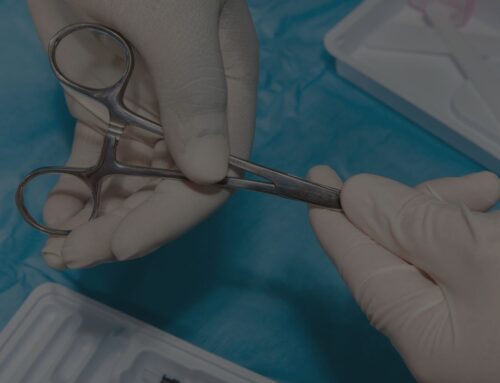
Today, Congress threatens to strip many intersex students, especially girls and women, of their right to play sports.
Like similar statewide bills that seek to restrict sports participation based on vague definitions of “sex”, H.R.28 (and S.9, currently still in the Senate) are discriminatory. They exclude transgender girls from playing on teams with other girls—and will also inevitably exclude at least some intersex girls.
H.R.28 and S.9 list “reproductive biology” and “genetics at birth” as the determinants of a student’s sex, but it is unclear how these will be interpreted for intersex students. Also unclear are how a student’s sex would be “verified” and who decides whether a student is “female enough.” Any form of enforcement raises massive privacy concerns for students, in addition to inviting harassment, invasive questioning and stigma that can be deeply harmful to youth.
Read on to see interACT’s letter of opposition, sent to Congress prior to the vote. You can also read responses from interACT Youth student athletes on our blog.
January 8, 2025
Dear Member of Congress,
interACT is a nonprofit organization dedicated to protecting the rights of children and youth with intersex traits – innate variations in physical sex characteristics that cause bodies to differ from what is considered stereotypically male or female. H.R.28 and S.9 would not only impact intersex students’ ability to play sports, but would subject them to discrimination and violations of their privacy and dignity that can cause lasting damage. Additionally, this misguided legislation would punish schools and programs that simply permit intersex and transgender students to play on teams that align with their gender identity, rendering these schools and programs ineligible for federal funding. We urge you to oppose H.R.28 and S.9.
Rather than “protect” women and girls in sports, H.R.28 and S.9 invert Title IX’s civil rights protections to subject women and girls in educational athletics programs –including intersex women and girls – to intrusive inquiries, improper scrutiny, and discriminatory harassment about the nature of their “reproductive biology and genetics at birth.” They also would force schools and educational programs at all age and competition levels to police students’ sex characteristics and draw draconian lines based on regressive and unscientific notions of what constitutes sex, or else risk losing federal funding. Title IX has protected the ability of all women and girls to participate in school athletics for half a century, and the Congress must reject this overreaching attempt to turn a cherished civil rights law into a vehicle for discrimination and exclusion.
“Intersex” is an umbrella term for a wide range of physical variations – including in a person’s chromosomes, external genitals, internal organs, and hormone function –that originate from the embryonic development process. A fertilized egg usually (but not always) has two sex chromosomes: XX or XY. For the first few weeks of gestation, XX and XY embryos look the same, but they later develop in different ways depending on genetic and hormonal factors. Typically, for an embryo with XY chromosomes, the gonads become testes; the genital tubercle becomes a penis; and the labioscrotal folds fuse and form a scrotum. For an embryo with XX chromosomes, typically the gonads become ovaries; the genital tubercle becomes a clitoris; and the labioscrotal folds develop into the outer labia. There are many ways in which this process can vary, resulting in a diverse range of intersex traits. Some traits (like variations in genital appearance) are more likely to be discovered at birth, while others (like variations in internal organs or chromosomes) may not be apparent until later.
At birth, intersex children are usually assigned either male or female, based on some combination of outward appearance and other factors (e.g., gonads, chromosomes, and other genetic markers if known at the time). Later, usually at puberty, hormones secreted by testicular and ovarian tissue cause the expression of secondary sex characteristics such as breast development, body hair, musculature, and depth of voice. These developments may or may not align with stereotypes associated with the assigned sex, and may differ from what would be expected given the person’s chromosomes and other sex-related characteristics.
H.R.28 and S.9, which purport to define each individual’s sex on the basis of their so-called “reproductive biology and genetics at birth,” willfully ignore the biological complexity of human bodies with intersex variations. An estimated 2% of all people are born with these variations – an incidence rate similar to the proportion of the U.S. population that resides in Tennessee or Massachusetts – amounting to tens of thousands of intersex children born in the U.S. each year. Although the vague standard set forth by H.R.28 and S.9 does not appear to acknowledge the existence of intersex youth, it will certainly, and negatively, impact them. Many intersex students would be effectively prohibited from participating in sports, and the question of enforcement raises deeply troubling privacy concerns.
To illustrate the barrier this legislation will represent for intersex students, consider “Jane,” a hypothetical student with complete androgen insensitivity. Jane was assigned female at birth and has always identified as a girl. Jane’s external genitals and secondary sex characteristics align with what is considered typical for female bodies. She has internal testes and XY chromosomes, as well as a variation in her androgen receptor gene that causes her body not to respond to the testosterone she produces, but rather to convert it into estrogen. What label would H.R.28 and S.9 impose on Jane based on her combination of “reproductive biology and genetics” if she wishes to play school sports? What is her school to do if administrators are aware of Jane’s variation, and they want to be in compliance with an enacted H.R. 28? Will Jane be required to produce her private medical records, submit to invasive testing, or face the humiliation of a genital exam? And at the end of the day, who decides whether she is “female enough” to play on a team with her friends?
H.R.28 and S.9 provide intersex students, and their well-intended educators, with no answer. Rather, these bills blithely assume that the categories of traits vaguely set forth – “reproductive biology and genetics at birth” – are exclusively binary, and that they will always clearly align. These assumptions are false and unscientific, and their adoption into Title IX is unconstitutional discrimination on the basis of a person’s sex characteristics, in violation of the Equal Protection Clause.
Title IX was enacted to promote equality and to ensure the availability of equal educational opportunities for all students, including in athletics programs. H.R.28 and S.9 are in direct conflict with both the spirit and the actual impact of Title IX, and they represent disturbing government overreach into people’s personal lives. interACT urges our elected representatives to reject these bills outright.






